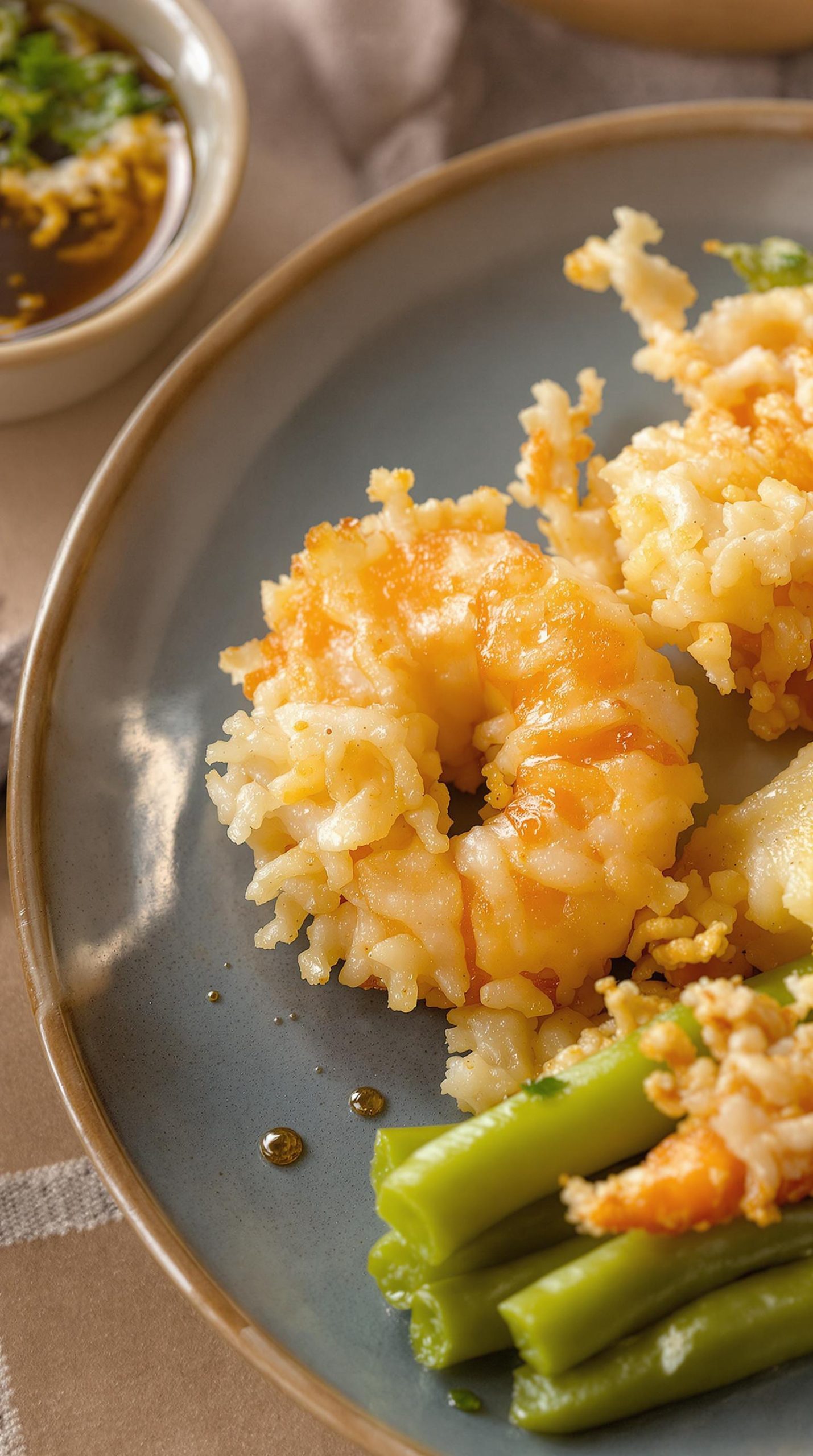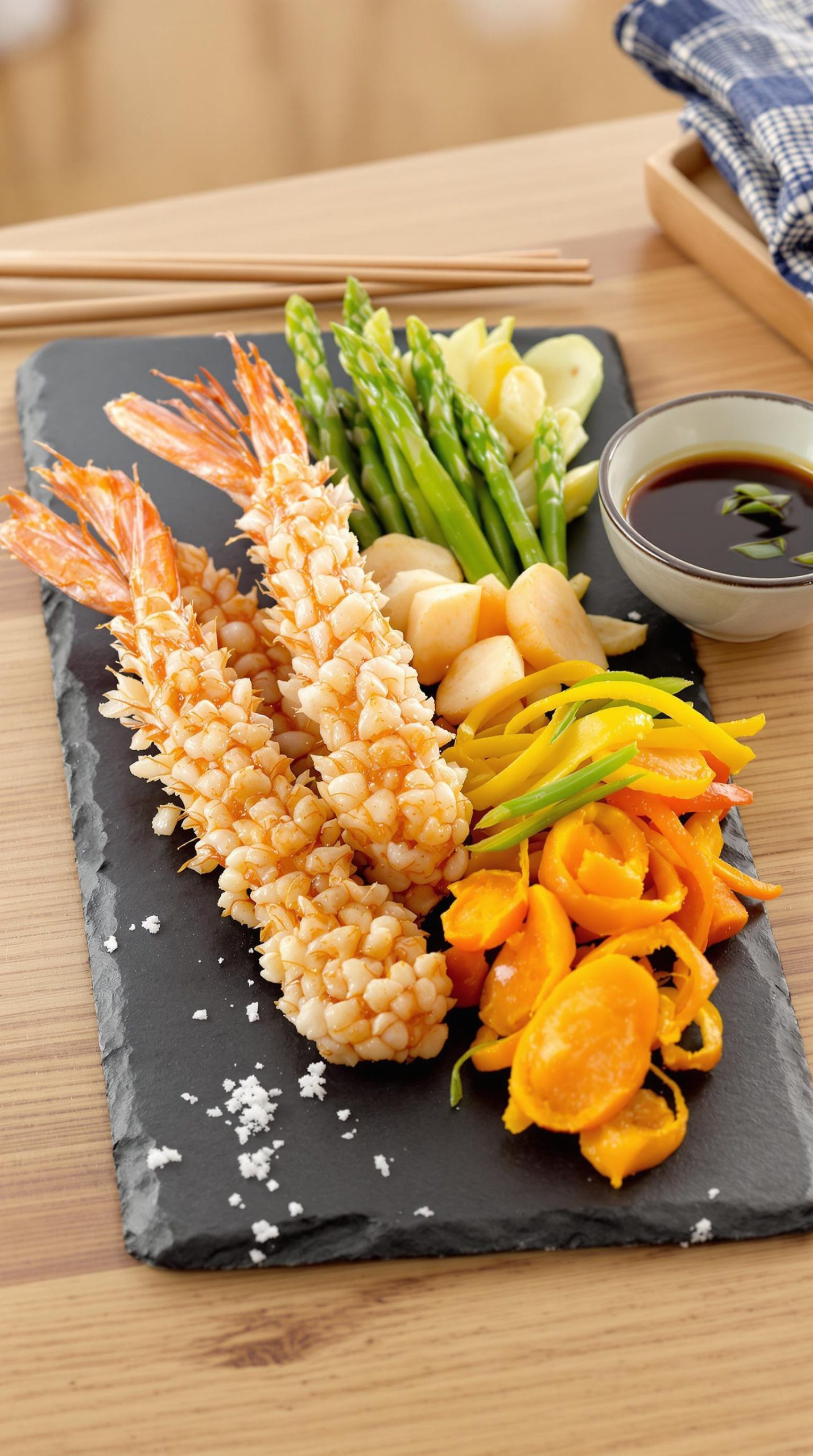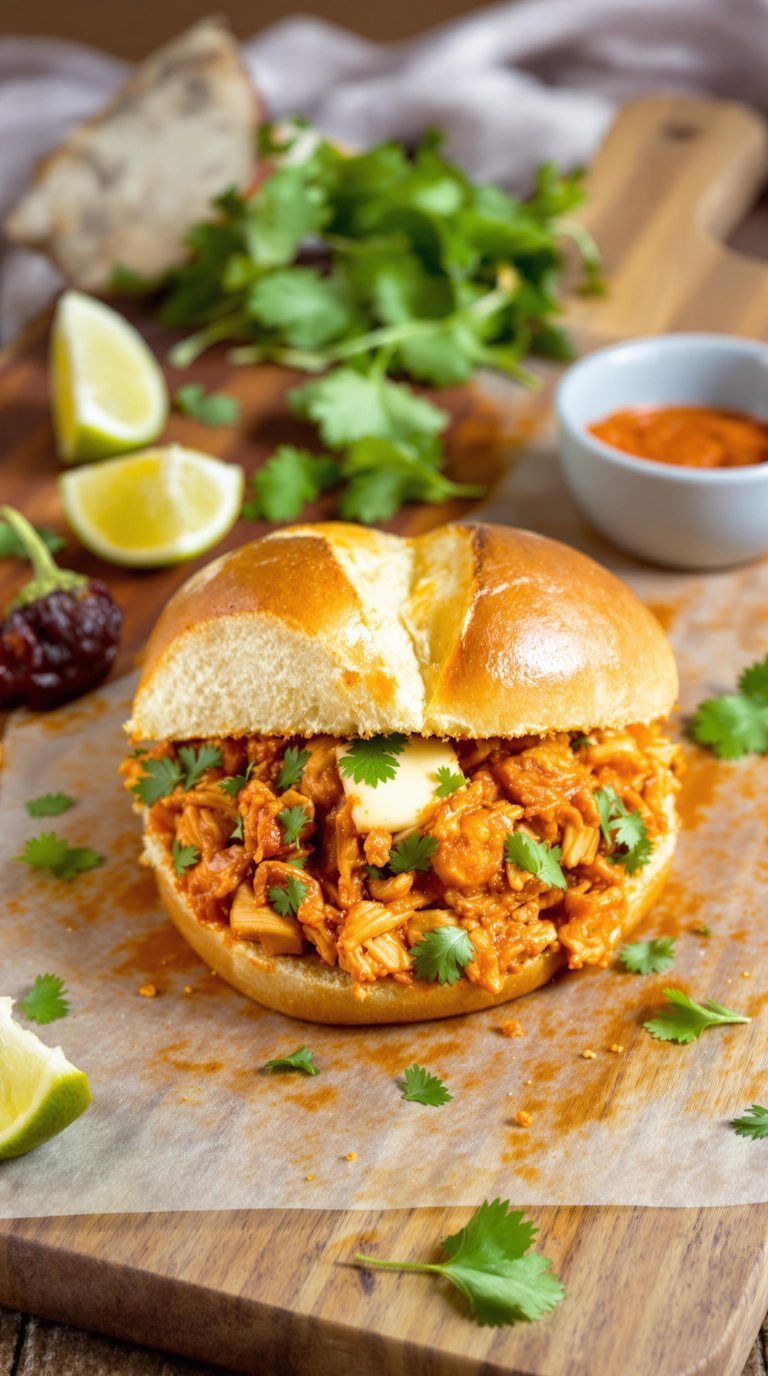Why You’ll Love this Crispy Japanese Tempura
After years of watching chefs masterfully prepare perfectly crisp tempura, I’ve discovered that the secret lies in this authentic Japanese batter recipe. You’ll be amazed how this simple mixture creates that delicate, airy crunch that shatters with each bite.
The ice-cold batter clings just right to vegetables or seafood, creating that distinctive cloud-like coating. No more soggy, oil-laden disappointments.
Can you imagine serving restaurant-quality tempura at home? With just flour, egg, salt, and ice water, you’ll create that golden, lacy coating that’s light as air. The key? Keeping everything chilled and using the batter immediately.
What Ingredients are in Crispy Japanese Tempura?
The beauty of authentic Japanese tempura batter lies in its simplicity. Just a handful of basic ingredients come together to create that ethereal, lacy coating that shatters with each bite. The secret isn’t in fancy ingredients but in the technique and temperature. When I make tempura at home, I’m always amazed that such humble components can produce restaurant-quality results when handled properly.
- 1 cup all-purpose flour
- 1 egg, beaten
- 1 teaspoon salt
- Ice water (amount varies to achieve desired consistency)
Temperature is absolutely critical when working with these ingredients. The water must be ice-cold—not just cool, but practically freezing. Some chefs even set their mixing bowl in an ice bath while preparing the batter.
And remember, this isn’t a make-ahead situation. Once mixed, the clock starts ticking, and the batter performs best when used within 30 minutes. The ingredients themselves aren’t exotic or expensive, which makes this recipe even more appealing for home cooks wanting to recreate that distinctive crispy-yet-light tempura experience without specialty items.
How to Make this Crispy Japanese Tempura

Making authentic tempura batter is all about timing and temperature. Start by gathering your 1 cup of flour, 1 beaten egg, and 1 teaspoon of salt in a bowl. Now here’s the vital part—keep everything cold. I mean seriously cold. The ice water isn’t just a suggestion; it’s the secret weapon that creates that characteristically light, crispy coating.
Add the ice water gradually, stirring with chopsticks or a fork (not a whisk!) until the mixture just barely comes together. You want to see lumps in your batter—a perfectly smooth batter is actually the enemy of good tempura.
Once all your ingredients are combined, place the batter in the refrigerator for about 30 minutes. This resting period allows the gluten to relax and the temperature to remain consistently cold. While it’s resting, you can prepare your vegetables, seafood, or whatever you plan to coat in this heavenly mixture.
Remember that 30-minute window I mentioned? That’s your ideal use time. The batter starts losing its magic powers after that, so timing matters. I like to set up my frying station while the batter chills—oil heating to the right temperature (around 350°F), paper towels ready for draining, and dipping sauce prepared. Many professional chefs prefer using luxurious Dutch ovens for tempura as they provide excellent heat retention and distribution.
When you’re ready to cook, remove the batter from the fridge and keep it over an ice bath if possible. Dip your ingredients quickly—don’t let them swim in the batter—and immediately place them in the hot oil.
The rapid temperature change from ice-cold batter to hot oil creates that characteristic lacy, crispy exterior that makes tempura so irresistible. Work in small batches to maintain oil temperature, and serve immediately while everything is at its crispiest.
There’s nothing quite like the delicate crunch of properly made tempura, where the coating shatters like glass while protecting the perfectly cooked morsel inside. For even heat distribution and perfect results, consider using a Dutch oven ceramic cookware which helps maintain consistent oil temperature throughout the frying process.
Crispy Japanese Tempura Substitutions and Variations
Now that we’ve mastered the traditional tempura technique, let’s explore some creative substitutions and variations that can rescue your dinner plans or simply add new dimensions to this Japanese classic.
Out of flour? Try cornstarch, rice flour, or even a gluten-free blend for extra crispiness. No eggs? A tablespoon of mayonnaise or a splash of seltzer water works surprisingly well.
For flavor twists, add spices like paprika or garlic powder to the dry mix. You can even go fusion by incorporating coconut milk instead of ice water for a tropical note.
Trust me, these little tweaks keep things interesting without sacrificing that delicate, airy crunch we all crave.
What to Serve with Crispy Japanese Tempura
While your tempura gets its final golden fry, you’ll want to contemplate what accompaniments will best showcase its delicate crunch.
I always recommend a small bowl of tentsuyu dipping sauce – that perfect blend of dashi, mirin, and soy sauce that complements without overwhelming.
Rice is non-negotiable in my book. A simple bowl of steamed short-grain rice creates the ideal canvas for those crispy morsels.
Add a small mound of grated daikon with a touch of soy for palate cleansing between bites.
For a complete meal? A light miso soup and pickled vegetables round things out beautifully.
Perfect harmony, perfect meal.
Final Thoughts
After mastering this tempura batter recipe, you’ll find yourself returning to it again and again, just as I’ve over the years. There’s something magical about that perfect crunch giving way to tender seafood or vegetables. Remember, temperature is everything—keeping that batter ice-cold right up until frying makes all the difference between soggy disappointment and crispy perfection.
What I love most about tempura is its versatility. From shrimp to sweet potatoes, from mushrooms to asparagus—the possibilities are endless. Give yourself permission to experiment, but always respect the fundamentals: cold batter, fresh ingredients, and proper oil temperature. Much like Chipotle’s approach to their famous guacamole recipe, balancing texture and freshness creates the most satisfying results. Isn’t cooking wonderful when simplicity yields such extraordinary results?





